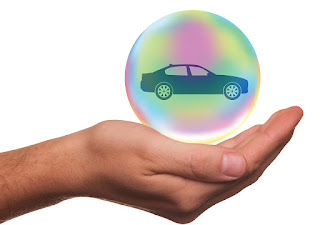- Public Road Testing. Public road testing clearly puts non-participants such at pedestrians at risk. Is it OK to test on unconsenting human subjects? If the government hasn't given explicit permission to road test in a particular location, arguably that is what is (or has been) happening. An argument that simply having a "safety driver" mitigates risk is clearly insufficient based on the tragic fatality in Tempe AZ last year.
- In general, see: https://grants.nih.gov/policy/humansubjects.htm
- A credible, independently reviewed argument that a road testing campaign provides adequate safety might be enough. But how transparent should that process be? Should we just take a company's word for it that they are doing responsible, safe road testing? For an example of a safety argument approach, see: https://safeautonomy.blogspot.com/2019/04/safety-argument-consideration-for.html
- Expecting Human Drivers to be Super-Human. High-end driver assistance systems might be asking the impossible of human drivers. Simply warning the driver that (s)he is responsible for vehicle safety doesn't change the well known fact that humans struggle to supervise high-end autonomy effectively, and that humans are prone to abusing highly automated systems. This gives way to questions such as:
- At what point is it unethical to hold drivers accountable for tasks that require what amount to super-human abilities and performance?
- Are there viable ethical approaches to solving this problem? For example, if a human unconsciously learns how to game a driver monitoring system (e.g., via falling asleep with eyes open -- yes, that is a thing) should that still be the human driver's fault if a crash occurs?
- Is it OK to deploy technology that will result in drivers being punished for not being super-human if result is that the total death rate declines?
- Confidence in Safety Before Deployment. There is work that advocates even slightly better than a human is acceptable (https://www.rand.org/blog/articles/2017/11/why-waiting-for-perfect-autonomous-vehicles-may-cost-lives.html). But there isn't a lot of discussion about the next level of what that really means. Important ethical sub-topics include:
- Who decides when a vehicle is safe enough to deploy? Should that decision be made by a company on its own, or subject to external checks and balances? Is it OK for a company to deploy a vehicle they think is safe based just on subjective criteria alone: "we're smart, we worked hard, and we're convinced this will save lives"
- What confidence is required for the actual prediction of casualties from the technology? If you are only statistically 20% confident that your self-driving car will be no more dangerous than a human driver, is that enough?
- Should limited government resources that could be used for addressing known road safety issues (drunk driving, driving too fast for conditions, lack of seat belt use, distracted driving) be diverted to support self-driving vehicle initiatives using an argument of potential public safety improvement?
- How Safe is Safe Enough? Even if we understand the relationship between an aggregate safety goal and self-driving car technology, where do we set the safety knob? How will the following issues affect this?
- Will risk homeostatis apply? There is an argument that there will be pressure to turn up the speed/traffic volume dials on self-driving cars to increase permissiveness and traffic flow until the same risk as manual driving is reached. (Think more capable cars resulting in crazier roads with the same net injury and fatality rates.)
- Is it OK to deploy initially with a higher expected death rate than human drivers under an assumption that systems will improve over time, long term reducing the total number of deaths? (And is it OK for this improvement to be assumed rather than proven to be likely?)
- What redistribution of demographics for victims is OK? If fewer passengers die but more pedestrians die, is that OK if net death rate is the same? Is is OK if deaths disproportionately occur to specific sub-populations? Did any evaluation of safety before deployment account for these possibilities?
If you're still wondering about Trolley-esque situations, see this podcast and the corresponding paper. The short version from the abstract of that paper: Trolley problems are "too contrived to be of practical use, are an inappropriate method for making decisions on issues of safety, and should not be used to inform engineering or policy." In general, it should be incredibly rare for a safely designed self-driving car to get into a no-win situation, and if it does happen they aren't going to have information about the victims and/or aren't going to have control authority to actually behave as suggested in the experiments any time soon, if ever.
Here are some links to more about applying ethics to technical systems in general (@IEEESSIT) and autonomy in particular (https://ethicsinaction.ieee.org/), as well as the IEEE P7000 standard series (https://www.standardsuniversity.org/e-magazine/march-2017/ethically-aligned-standards-a-model-for-the-future/).


